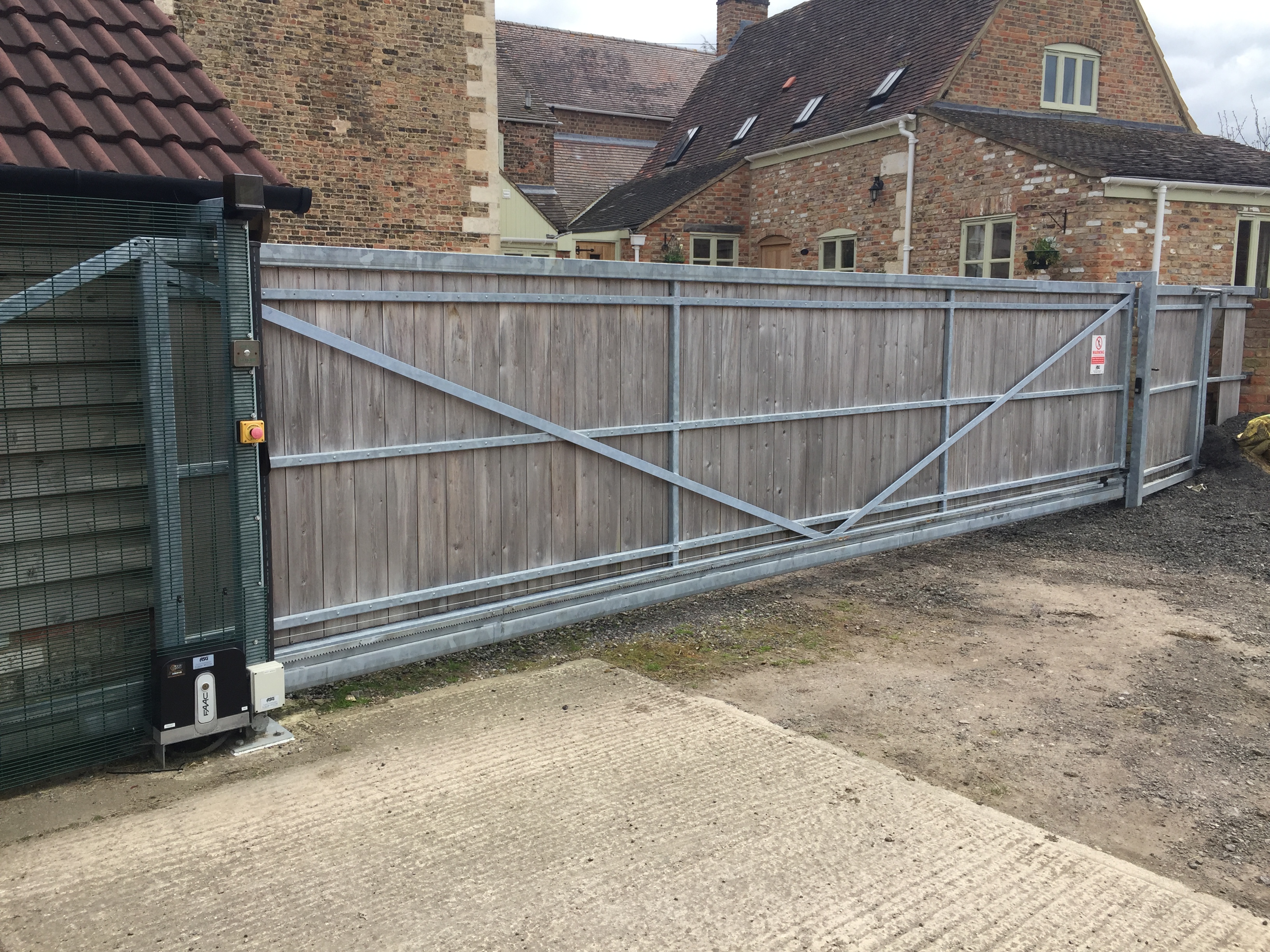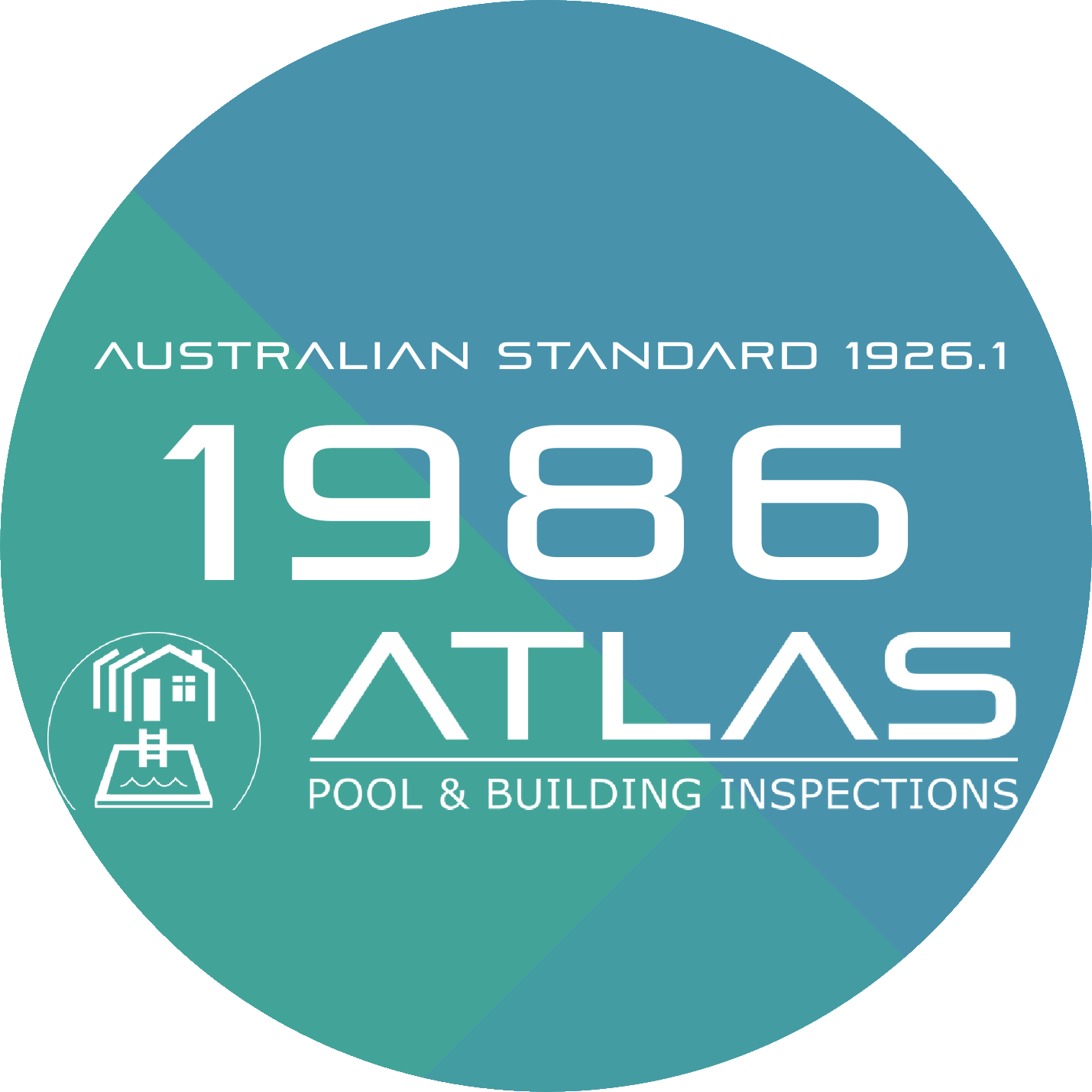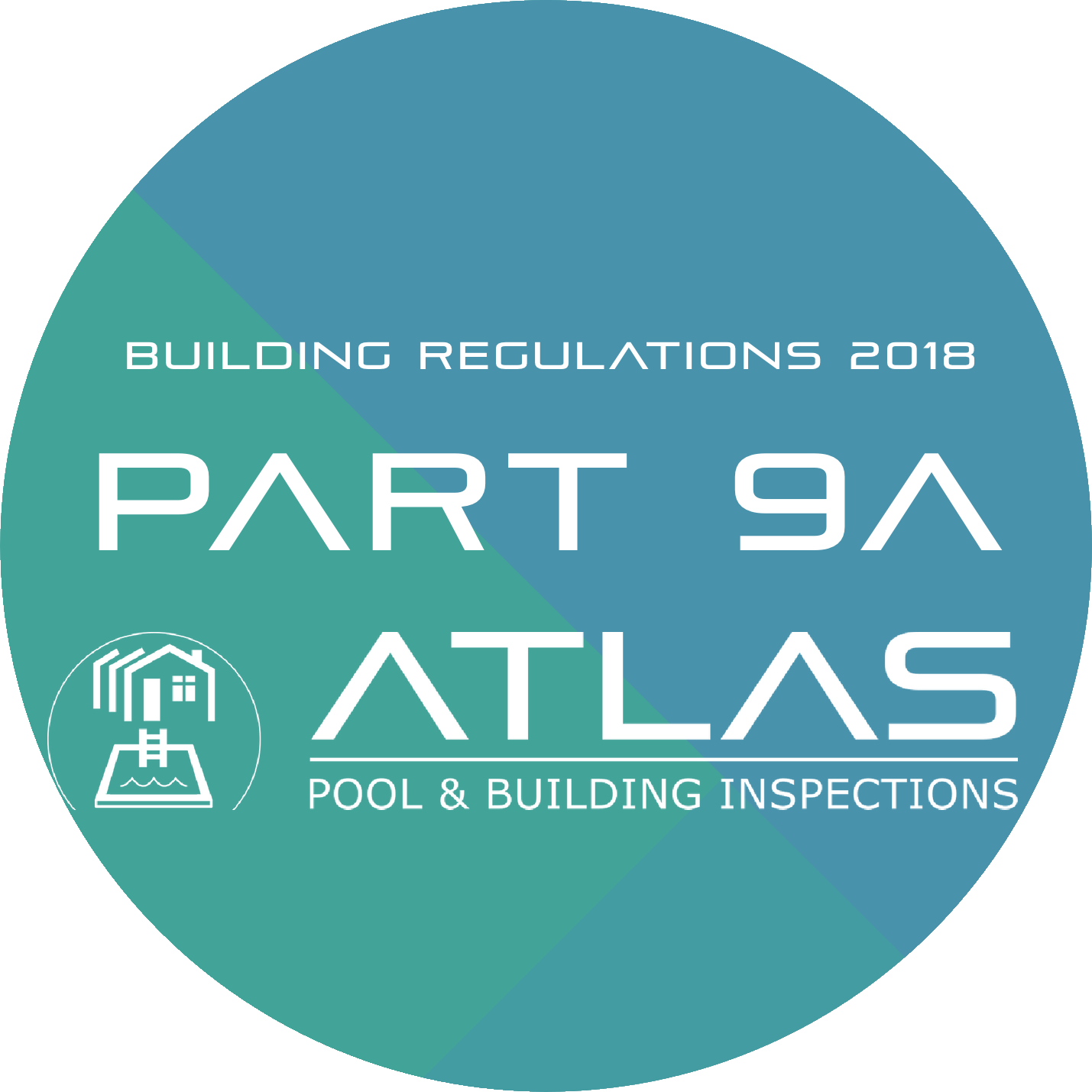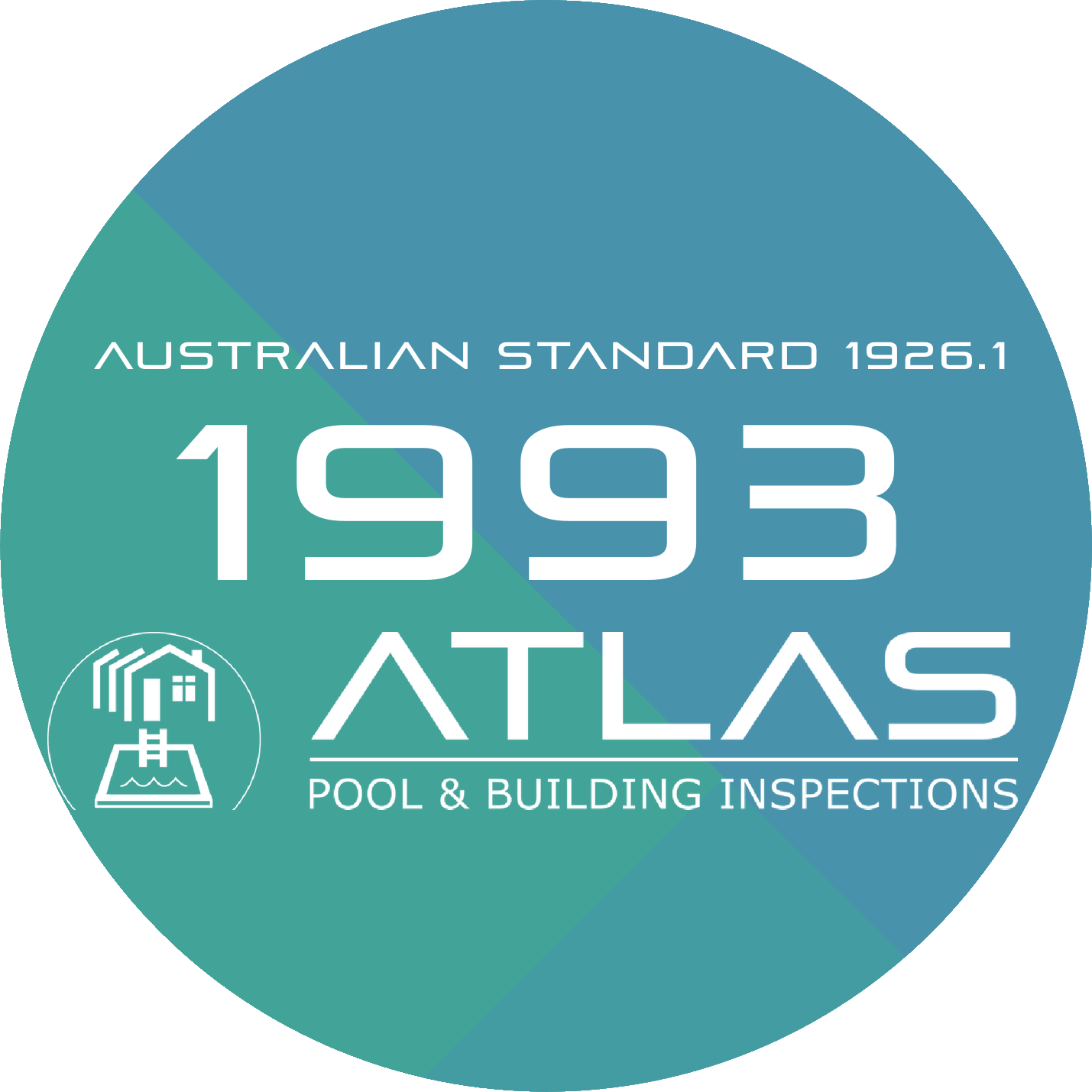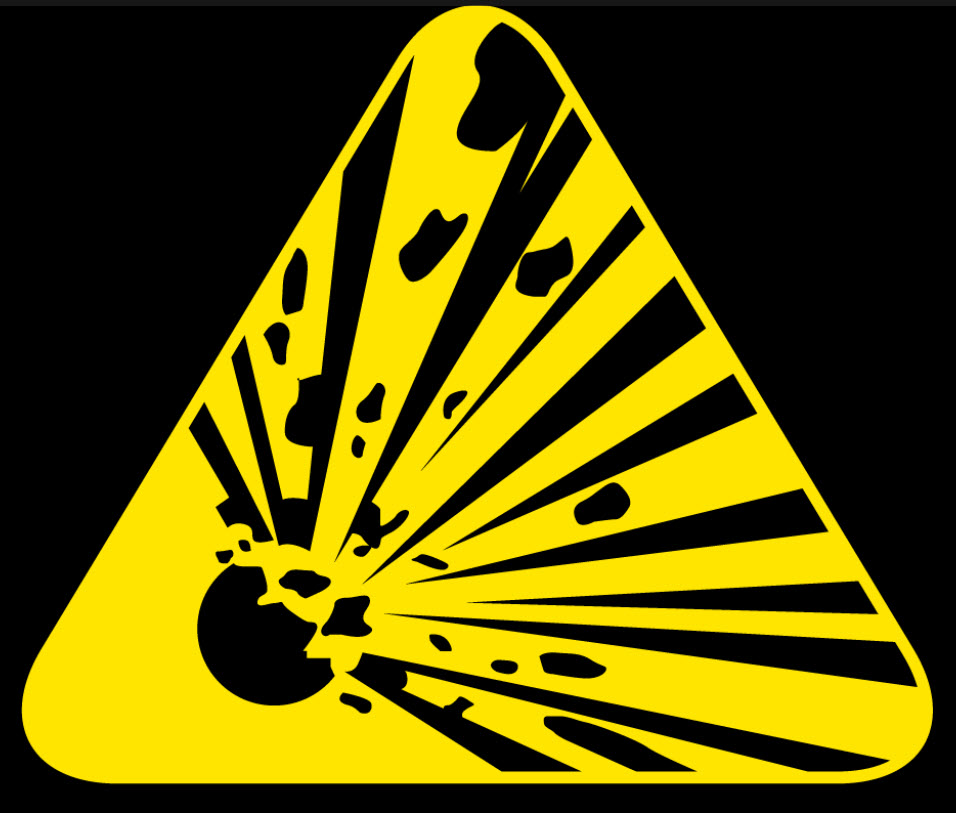Title Page
-
Gate Location
-
Client & Address
-
Serial Number
-
Engineer
-
Conducted on
Gate Information
Asset Information
-
Which level of PMI & Checks are being conducted?
-
Completing a 3/6 monthly PMI, you confirm that there are no changes to the current Risk Assessment, Log Book or Gate system and that no repair has been carried out on the gate system since the last service visit which has caused any changes to the system.
Please ensure the current Logbook & Risk Assessment are signed & updated with the customer.
A Risk Assessment, Force Testing & Safety Checks are required to be completed and updated every 12 months.
1.0 Asset Information
-
1.1 Make
- BFT
- Parking Facilities
- FAAC
- CAME
- BPT/Fadini
- NICE
- Avon
- APC
- Broughton
- Other
-
List other:
-
1.2 Model
-
1.3 Gate Type
- Single Swing Gate
- Double Swing Gate
- Cantilever Gate
- Sliding Track Gate
- Bi-Fold Speed Gates
- Turnstile
- Other
-
List other:
-
1.4 Serial Number
-
1.5 Control Panel Details
2.0 Asset Information
-
2.1 Make
- BFT
- Parking Facilities
- FAAC
- CAME
- BPT/Fadini
- NICE
- Avon
- APC
- Broughton
- Other
-
List other:
-
2.2 Model
-
2.2.1 Gate Type
- Single Swing Gate
- Double Swing Gate
- Cantilever Gate
- Sliding Track Gate
- Bi-Fold Speed Gates
- Turnstile
- Other
-
List other:
-
2.3 Serial Number
-
2.4 Control Panel Details
-
2.6 Motor Drive Details
-
2.6 Gate Weight (in KG)
-
2.7 Gate length (in M)
-
2.8 Gate height (In M)
-
2.9 Type of Location
- School
- Residential House (Private property)
- Residential Flats (public access)
- Commerical Business
-
2.10 Type of users
-
2.11 Cycle usage per day
-
2.12 Ground Condition around Gate
- Tarmac
- Concrete
- Gravel/ Stone
- Level Ground
- Sloping
-
2.13 CE Marking Present
-
2.14 Gate Installation Date
-
2.15 Mains Electrical Sticker Installed
-
2.16 Provide images of Automated Gate Leaf(s) & Surroundings
3.0 Access Control & Activation
-
3.1 Access Control & Activation devices installed
- Intercom (Video)
- Intercom (Audible)
- Keypad
- Remote Fob
- Token/ Swipe Card
- Entry Loop
- Exit Loop
- Other
-
List of Access Control
-
3.2 Fire Alarm Connected?
-
3.3 Battery Back-up System Installed?
-
3.4 Access Control Images
4.0 Safety Devices Installed
-
4.1 Safety Devices & Warnings Installed
- Safety Edges
- Inner Photo Cells (Secure side)
- Outer Photo Cells
- Lazer Scanner
- Light Curtain
- Hold to Run Key Switch
- Warning Light
- Audio Sounder
- Emegency Stop Button
- Gate Signage
- No Safety
-
4.2 Provide Details of Additional Safety Devices.
5.0 Maintenance Log book
-
5.1 Maintenance Log Book
- Present & Updated
- Not on site
- Not Required
-
5.2 Service Last completed date
-
5.3 Where are the Maintenance Log books kept
-
5.4 Where are the gate keys located
PMI Checks
6.0 PMI Checks
-
Gate PMI Service
6.0 Gate Condition
-
6.1 Check Gate Installation for level and squareness, check for any signs of damage or misalignment.
-
6.2 Check structure of Gate Leaf(s), Posts & Welds, ensuring all fixings are tightened and secure.
-
6.3 Check Ground Bolts and Base Plate tightness, Torque as Required.
-
6.4 Engage and disengage manual operation, Test for correct operation.
-
6.5 Check and Adjust limit position as required. Including Physical stops & Supports.
-
6.6 Check and top up any fluid & Oil levels as applicable.
-
6.7 Check and Tighten Motor fixings, clean out boxes as applicable.
-
6.8 Check Gate for correct operation and Function, testing all access control systems.
-
6.9 Check supply Voltage from mains is correct, including any standby powers installed.
-
6.10 Check & Test Mains Spur functions correctly and labelled and is suitable for application.
-
6.11 Check & Test RCD Supply (if possible)
-
6.12 Check all flexible connections, All connections into Control Panel. Rewire & Connect lose connections as required.
-
6.13 Check for any water ingress, also checking signs of corrosion & Rust.
-
6.14 Lubricate all moving parts, Hinges & Motor Drives, and check operation for excess noise or wear.
-
6.15 Clean Motors, Photocell Covers and any other accessories fitted.
-
6.16 Hold Open/ Pause Time (Seconds)
- 1-5 Seconds
- 5-10 Seconds
- 10-20 Seconds
- 20-30 Seconds
- 30sec - 1minute
- 1 - 2 minutes
- 2+ minutes
- Unable to Test
-
6.17 Opening Time
- 1-5 Seconds
- 5-10 Seconds
- 10-20 Seconds
- 20-30 Seconds
- 30sec - 1minute
- 1 - 2 minutes
- 2+ minutes
- Unable to Test
-
6.18 Closing Time
- 1-5 Seconds
- 5-10 Seconds
- 10-20 Seconds
- 20-30 Seconds
- 30sec - 1minute
- 1 - 2 minutes
- 2+ minutes
- Unable to Test
7.0 Safety Equipment
-
7.1 Check & test Manual "Hold To Run" Key as fitted.
-
7.2 Check correct function of Photocells or Laser Scanner
-
7.3 Check & test Emergency Stop Button
-
7.4 Check and test emergency override for correct operation
-
7.5 Check & Test Fire Alarm activation
-
7.6 Check & Test Visual Warning Lamp
-
7.8 Check & Test Audible Warnings
-
7.9 Check all safety Signage present, and clearly visible.
-
7.10 List Signage Installed
- Stop
- Keep Clear
- No Entry
- Do not walk under barrier
- Other
- No Signage Installed
- Customer Bespoke Sign
-
List Other:
8.0 Ground Loops
-
8.0 Are Ground Loops installed?
-
8.1 Check condition, Operation & Connections of Free Exit Loop
-
8.2 Check condition, Operation & Connections of Safety Loop
-
8.3 Check condition, Operation & Connections of Entrance Loop
-
8.4 Provide Details
9.0 Safety Edges
-
9.0 Are Safety Edges installed?
-
9.1 Check condition, Operation & Connections of Safety Edge(s), Ensure every safety edge fitted is tested for correct operation.
-
9.2 List Edge Locations:
- Lower Leaf - Opening
- Lower Leaf - Closing
- Leaf to Leaf - Closing
- Hinges or Pilars
-
9.3 List any other Safety Edge Information
10.0 Entrance & Exit Accessories
-
10.1 Check for correct operation of all Access Control, Raise & Lower Buttons & Customer Control Functions
-
10.2 Check & Test Keypad
-
10.3 Check & Test Fobs & Ariel System
11.0 Documentation
-
11.0 Does the customer have a maintenance file?
-
11.1 Check End User has Barrier cabinet keys and Manual over ride key.
-
Information
-
11.2 Ensure user is familiar with Barrier operation and Emergency procedures.
-
11.3 Maintenance Log Book
- Present & Updated
- Not on site
- Not Required
-
11.4 Where are the Maintenance Log books kept
-
11.5 Service Last completed date
-
11.6 Where are the equipment keys located
12.0 Pictures
-
12.1 Gate Leafs, Cabinet & Control Panel
Gate Safety & Risks
Information
-
Risk Assessments must be carried out on all sites to ensure that the risk of injury or fatality is eliminated to users or members of the general public as a result of system design.
These are to conform with BS-En12341-1:2003 for Gate & Barrier Automation.
Regular preventative maintenance helps to prolong the system and conserve reliability.
If the gate system is deemed to be unsafe, The gate shall be switch off power and issue a condemned letter as per Health & Safety Executive, GateSafe, and DHF advice and guidance; as the liability rests with the last person to service the gate system. -
13.0 Risk Assessment Completed?<br>Risk Assessment will be completed using DHF TS11:2018 Code of Practise as reference to all testes & checks carried out.
Applicable Machinery Directive Essential Health and Safety Requirements complied with? This section only needs to be completed where the Machinery Directive applies (new or extensively modified systems) an explanation of the EH&SRs can be found in Annex B TS11:2018.
-
1. Foreseeable misuse
1.1.2. Principles of safety integration
1.1.3. Materials & products
1.1.5. Design of gates to facilitate handling
1.2.1. Safety & reliability of control systems
1.2.2. Activation devices
1.2.3. Starting
1.2.4. Stopping
1.2.6. Failure of power supply
1.3.1. Stability of foundations
1.3.2. Risks of break up during operation
1.3.4. Risks due to surfaces, edges or angles
1.3.5. Risks related to combined machinery
1.3.6. Risks related to variations in operating conditions
1.3.7. Risks related to moving parts
1.3.8. Choice of protection against risks from moving parts
1.3.9. Risks of uncontrolled movements
1.4.1. General requirements of guards
1.4.2.1. Special requirements for fixed guards
1.4.3. Special requirements for protective devices
1.5.1. Electricity supply
1.5.4. Errors of installation
1.5.14. Risk of being trapped
1.5.15. Risk of slipping, tripping or falling
1.6.1. Machinery maintenance
1.6.2. Access to operation position & servicing points
1.6.3. Isolation of energy sources
1.7.1. Information
1.7.1.2. Warning devices
1.7.2. Warnings
1.7.3. Markings
13.0 Risk Assessment
-
13.1 The following are adequate to support the gate and the forces applied by the automation and expected wind loadings and protect it from singe component failure hazards (1.5.1)
- Hinges
- Rollers
- Travel Stops
-
13.2 The following are adequate to support at least 2 x the forces applied by the automation and expected wind loadings without permanent distortion (1.5.1)
- Foundations
- Support Posts
- Fixings
- Brackets
- Supports
- Gate leaf Infill
- Gate Leaf Stucture
-
13.3 Check condition of mains supply & isolator.
-
13.4 Structural integrity - Check foundations
-
13.5 Control system faults causing loss of safety (safe edge, light grid, laser scanner etc, wicket gate switch, limit switch control system faults) (1.5.2.13)
-
13.6 Ensure Guard and Fencing complies with safety sizes reach through/over, fixings secured by tool. (1.5.3)
-
13.7 Gate Infill Type Installed? (1.5.3)
- Round Bar
- Square Bar
- 3/5/8 Prison Mesh
- Solid Panel
- Wood Slats
- Palisade Bars
- other
-
13.8 Safety distances . Check compliance maximum distance between fixed vertical elements is 100mm (1.5.4)
-
13.9 Inherent force limitation (1.5.6)
-
13.10 Safe edge and any control device compliant with EN 12978 (1.5.6.2)
-
13.11 Light Curtain, photo cells and similar devices compliant with EN 12978; (Carry out Light Beam test with Test piece B) Test piece B. Rigid material 300mm x 50mm painted half matt black and half RAL 7040 grey. (1.5.7.1)
-
13.12 Structural failure due to wind load (derailment or collapse due to wind load) (1.5.8)
-
13.13 What weather conditions will the system be exposed to? (1.5.8)
-
13.14 Estimated maximum wind speed (1.5.8):
-
13.15 Entrapment hazards can be controlled by providing a manual release; use of the manual release shall not introduce any further hazards and must remain safe when power is restored. Moving the gate in manual must be achievable with ease and, where more than one person is required to move the gate, the user instructions must explain this as per EN 12604 (1.5.10)
-
13.16 Gate Safety Images
-
13.17 Users and others who may encounter the system: Note; Vulnerable persons are (eg young children, physical disabilities, sight impairment, frail, elderly)
- No untrained perseons Present
- Untrained persons could be present
- high Number of vulnerable persons present
-
Please describe Nature of vulnerable persons & Reason/location for vulnerable persons
-
13.18 Describe & List any other requirements or concerns.
-
13.19 Height of Gate Leaf
-
13.20 Width of Gate(s) Leaf
-
13.21 Road width opening (post to post)
14.0 Vehicle and pedestrian control methods
-
14.1 Vehicle and pedestrian control methods installed;
- Zone lighting in the hours of darkness
- Warning beacon(s)
- Warning sounder
- Signage
- Ground markings
- Reflective material
- Pedestrian separation railings provided
- Dedicated pedestrian access provided
- Traffic lights
- Traffic calming
- Vehicle impact protection bollards
- Other
15.0 Gate Safety & Risks Describe how the hazard has been removed (safe design) or controlled by state of the art means, Wherever possible safe design has been used over application of safety devices to eliminate hazards.
-
15.1 Type of Installation
- Single Swing Gate
- Double Swing Gate
- Cantilever Gate
- Sliding Track Gate
- Bi-Fold Speed Gates
- Turnstile
- Other
-
15.2 Runback Guarding protection installed and complies with safety sizes. (Sliding Gate/Tracked Gate)
-
15.3 Lower tracked gate rolling gear hazards Guard to within 8mm of ground.
- Yes
- No
- N/A
-
15.4 Lower cantilever gate rolling gear hazards shall be controlled by at least one of the following
- Internal rollers via lower edge slot
- External or exposed rollers as a guard
- Not Safe - High Risk
- N/A
-
15.5 Upper guide/roller draw in hazards shall be controlled by at least one of
- Guarding
- Hold to Run
- Light Curtain
- N/A
- Not Safe - No protection
-
15.6 All other support frame, leaf or perimeter shear and draw in hazards shall be controlled by at least one of:
- Guarding
- Hold to Run
- Light Curtain
- N/A
- Not Safe - No protection
-
15.7 Drive unit draw in hazards controlled
- Guarding
- Hold to Run
- Light Curtain
- N/A
- Not Safe - No protection
-
15.8 Entrance portal support frame shear or draw in hazards shall be controlled by at least one of:
- Guarding
- Hold to Run
- Light Curtain
- N/A
- Not Safe - No protection
-
15.9 Main trailing edge crush and impact hazards shall be controlled by at least one of: (Note: An opening crush hazard exists whenever the leaf comes to within 500mm of a fixed object, impact hazards are present throughout movement.)
- Guard
- Safety distances, for crush element only
- Hold to run
- Inherent or safe edge derived force limitation
- Light curtain
- N/A
- Not Safe
-
15.10 Main leading edge crush and impact hazards shall be controlled by either
- Inherent or safe edge derived force limitation in combination with *photo beams across both sides of the opening
- Hold to run or light/radar curtaining
- N/A
- Not Safe
- Other
-
List of additional hazards or protection devices installed:
-
15.11 Images
-
15.12 Number of Gate Leaf(s) Installed
-
15.13 Closing crush and impact hazards shall be controlled by at least one of
- Inherent or safe edge derived force limitation in combination with *photo beams across both sides of the opening
- Hold to run or light/radar curtaining
- N/A
- Not Safe
- Other
-
15.14 Opening crush hazards shall be controlled by at least one of
- Hold to Run
- Safety distances, for the crush element only
- Inherent or safe edge force limitation
- Light curtain
- N/A
- Not Safe
- Other
-
15.15 Hinge area crush, draw in or shear hazards shall be controlled by at least one of: (Maximum gap of 100mm allowed in all circumstances)
- Safe design hinges
- Flexible guards
- Hold to run
- Safe edge
- Light curtain
- N/A
- Not Safe
- Other
-
15.16 Lower edge crush and impact hazards shall be controlled by at least one of
- Inherent or safe edge derived force limitation in combination with *photo beams across both sides of the opening
- Hold to run or light/radar curtaining
- N/A
- Not Safe
- Other
-
15.17 Reach through arm crush hazard shall be controlled by at least one of
- Fine mesh to both outer leaf faces
- Hold to Run
- Light Curtain
- N/A
- Not Safe
- Safety Gap
- Safety Edges
- Photocells
-
List of additional hazards or protection devices installed:
-
15.18 Images
16.0 Electrical safety (1.5.2)
-
16.0 Mains Electrical Testing completed?
-
16.1 Supply inspected tested and certified to BS 7671/ET 101
-
16.2 30mA RCD present on supply
-
16.3 Wiring beyond the supply inspected and tested, Wiring beyond the supply rated for current, voltage and environment & All conductive metalwork connected to earth?
-
16.4 Enclosures are of correct IP rating for location and contents
-
16.5 Enclosures containing dangerous voltages only openable with key or tool
-
16.6 All pole isolator provided and lockable “off” when not visible from the gate system
17.0 Control System Reliability
-
17.1 Control system manufacturer cable specification followed
-
17.2 Cabling protected from damage
-
17.3 Enclosures sealed & Wiring and cabling tested
18.0 Safety device integrity
-
18.1 Safety device correctly installed/ functional
-
18.2 Cabling protected from damage without a visual damage.
-
18.3 Safety Device enclosures sealed & protected
-
18.4 Category 2 device installed
19.0 Residual & Trip Hazards
-
19.1 Trip hazards reduced to a minimum & Trip hazards made clearly visible?
-
19.2 List Residual Hazards
20.0 Force Testing EN12445
-
20.1 Pass Criteria:
Maximum dynamic force (Fd) is limited to: 400N
All crush hazards: 1400N for all horizontal impact hazards
Maximum static force (Fs) in all cases: 150N.
Maximum time for forces to be above 150N (Td) in all cases: 0.75 seconds.
Maximum time forces to be above 25N (Tt) in all cases: 5 seconds.
Maximum time forces to be ≤25N in all cases: Infinite.
-
20.2 Carry out Force Testing to EN 12445.
21.0 Responsible Person (Site)
-
21.1 The responsible person on site is familiar with the below Automated Gate operation, and can safety perform the below tasks.
-
21.1 Competent in the Emergency Override procedure & operation. (Electrical E-stop. Etc)
-
21.2 Competent in the Manual Override procedure & operation.
-
21.3 Competent in the full operation of the Automated Gate system.
22.0 Customer Documentation
-
Customer Documentation Present
-
22.1 Specification/drawings are in the technical/maintenance file
-
22.2 Certificate of Compliance present in file?
-
22.3 Declaration of Conformity present in file?
-
22.4 Control Systems Declaration of Incorporation
-
Where a manufacturer Declaration of Conformity is not provided a complete Machinery Directive conformity assessment process must be undertaken and documented for the safety device; to include other relevant directives, eg Low Voltage, Electromagnetic Compatibility and Radio Equipment Directives, the responsibility for this falls to the assembler.
-
22.5 Safety device manufacturer Declaration of Conformity present
-
Where a manufacturer Declaration of Conformity is not provided a complete Machinery Directive conformity assessment process must be undertaken and documented for the safety device; to include other relevant directives, eg Low Voltage, Electromagnetic Compatibility and Radio Equipment Directives, the responsibility for this falls to the assembler.
-
22.6 O&M Manual present in file?
-
22.7 Electrical Test results and certificates are in the technical/maintenance file
-
22.8 Force Testing & Commissioning Documentation for Installation?
Gate Summary
23.0 List Replacement Parts, Items or Safety upgrades required.
-
23.1 Requirements (to comply with safety)
-
23.2 Customer Advisories & Recommendations (increase gate safety)
24.0 Compliance
-
24.1 Gate Safety Notice issued for non compliance
-
24.2 When is the next Risk Assessment Required?
25.0 PMI Summary
-
Based on completion of the Automated Gate PMI, We consider the Barrier to have:
26.0 Signatures
-
Audit Completed By:
-
Position held
-
Engineer Signature
-
Customer Signature
-
Position Held
27.0 Information
-
General Information & Testing Standards to:
Installation compliant with Health and Safety at Work Act 1974 section 2, 3 and 7
Installation compliant with Machinery Directive 2006/42/EC
Installation compliant with Electricity at Work Act 1998 and Building Regulations - Part P England & Wales, Section 5.6/6 in Scotland)
Maintaining for safety
Component parts can wear and fail, sometimes catastrophically. Like most machinery, powered doors and gates need to be maintained to remain safe. Powered gates forming parts of workplaces or in common parts of residential complexes will be subject to health and safety law. Owners, occupiers, landlords and managing agents will have on-going responsibilities for the safety of all users and all those who may encounter the gate.
There are a number of current standards which are relevant to powered gates, including:
BS EN 13241-1 the Product Standard for powered doors and gates (and most relevant to the CPR)
BS EN 12604 & BS EN 12605 on mechanical requirements and tests
BS EN 12453 & BS EN 12445 on requirements and test for powered gates
BS EN 12635 on installation and use
BS EN 12978 on safety devices for power operated doors and gates
BS EN 60335-2-103 on drives for household and similar gates
BS EN 60335-2-95 on drives for residential vertically moving garage doors
